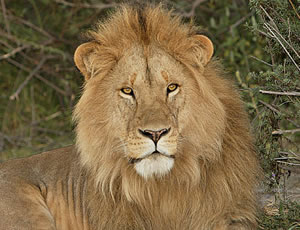 |
 |
| Tanzania Safari in Northern Circuit |
| Arusha National Park |
|
 |
Only 32 kilometers away from the Arusha city is
the Arusha National Park which was described by Sir Julian Huxley
as " a gem amongst parks". It consists of three spectacular
features, the Momela Lakes, Mount Meru and the Ngurdoto Crater.
The park's altitude varies from 1,500 meters to more than 4,500
meters covering an area of 137 square kilometers. Also it is famous
for walking Safaris Park escorted by armed rangers for the safety.
On clear days magnificent views of Mount Kilimanjaro
can be seen from almost any part of the park. The vegetation and
wildlife varies with the topography which ranges from forest to
swamp. The park is famous for its 400 species of birdlife, both
migrant and resident, including the pelicans and flamingo reside
at the Momela Lakes and Ngurdoto crater.
The birdlife varies from these places provided
that they are separated by a narrow peace of land.
|
Animals frequently seen in the park are black
and white colobus monkey baboon, elephant, buffalo, giraffe,
hyena, zebra and a wide range of antelope species. The reptiles
include tortoises, geckos, lizards, monitor lizards, and different
kinds of snakes. A more day stay at Arusha National Park allows
hiking the little mountain that looks like a pyramid near Momela
gate known as Ol'doinyo Landaree and camel safaris can be arranged
at the village of Mkuru. |
| Tarangire National Park |
|
| Located
south of the plains of Maasai land and east of Lake Manyara, a three-hour
drive or 114 kilometers from Arusha city, Tarangire is the fourth-largest
national park in Tanzania.
The park originates its name from
the River Tarangire that cross the park been derived from Maasai
language who inhabits the area. Covering an area of 2,600 square
kilometers it's famous for its tree-climbing Pythons.
The topography of Tarangire is open
acacia woodland, open bush, swamps, rivers, plains with scattered
baobab trees. The trees grow in arid, semi-arid and sub-humid tropical
climates and hold up to 300 litre of water. Tarangire has a large
population of elephants around the baobab trees.
Other animals that resides the park include spotted
hyena, cheetah, lion, leopard, Maasai giraffe, impala, Grant's gazelle,
lesser kudu, African buffalo, eland, bushbuck among others. |
 |
River Tarangire and surrounding
accommodates different species of birdlife more than 300 are recorded
they include Maasai ostrich, white pelican, pink-backed pelican,
white stork, Marabou, sacred ibis, Egyptian goose and crowned crane
few to mention. |
| Lake Manyara National Park |
|
 |
Lake
Manyara National Park is located between Ngorongoro crater and Tarangire
National Park. Covers an area of 330 squares kilometers the famous
spectacles are Lake Manyara itself and easily sighting tree climbing
lions. The Mto-wa-Mbu village (Mosquito village) and the East Africa
Rift Valley escarpment add the boundaries of the park.
The topography of Manyara is wetland
forest with Mahogany and fig trees, the open land, savannah, marshes
and acacia woodland. The environment resides the large number of
wild animals common zebras, herds of buffaloes and elephants, giraffes,
impala, waterbuck, bushbuck, wildebeest, klipspringer, spotted hyena
and leopards among the list. Lake Manyara is noted for its wealth
of birdlife from the birds of prey to the water birds.
The birds of prey include vulture
and ayre's and crowned hawk eagles. Others are flock of flamingoes,
pelicans, ostrich, marabou stork, white-backed ducks and goliath
heron |
among others. Also the lake accommodates
a large number of hippos mammals into its pool and make one of East
Africa park sighting at a closer range. Manyara has also minor and
major hotsprings within the park famous known as "Maji Moto"
a Swahili word means (Hot water) to the north and some River like
Chem chem, Ndala, Bosayo Rivers. |
| Ngorongoro
Crater Conservation |
|
 |
The
first view takes your breath away. Ngorongoro is a huge caldera
formed after the collapse of volcano, 250 square kilometers and
23 kilometers wide. The crater has an average depth of 600 meters.
Its spectacular setting and abundance of wildlife combine to make
it a wonder of the natural world.
The crater alone has over 20,000
large animals including some of Tanzania's last remaining black
rhino. Animals are free to leave or enter the crater but most of
them stay because of the plentiful water and food available on the
crater floor throughout the year.
Other mammals include wildebeest,
zebra, spotted hyena, hunting dogs, gazelles, hyena, jackals and
primates like mice and grasshoppers. The open grassland covers most
of the crater floor and feeds the herbivores.
The crater has abundant yellow barked
acacia trees to its Lerai forest making a home to Elephants, baboon,
bushbucks, waterbucks and velvet monkey. |
| The
floor has a number of wetland including the Munge River, Lake Makati
and Lake Magadi. The Lakes are the attractive point to the numerous
flamingos, pelicans, blacksmith Plover, African Cuckoo, Red-eyed
Dove and other water birds more than 300 species are recorded.
Also the wetland accommodates the
large number of hippos and smaller creatures such as frogs and snakes.
Within the crater walls there is a high possibility of tourists
to sight the "Big Five" that's Elephant,
Lion, Buffalo, Hippopotamus and Black Rhinoceros. |
| Serengeti National
Park |
|
| It's
vast plain grassland with dotted trees and rocks outcrop. Serengeti
is the world famous wildlife sanctuary there still exists the greatest
and most spectacular concentration of game animals found anywhere
in the world.
Covering more than 14,500 square
kilometers the park is the largest in Tanzania. Here is where the
Great Migration of wildebeests and zebras can be experienced.
During the dry season of June through
July, these wild animals migrate to the contiguous Maasai Mara National
Park in Kenya and the Ngorongoro Conservation Area for greens and
water using the western and northern corridor. There are also acacia
and savannah woodland, wetland like rivers and lakes and occasional
swamp.
The vegetation of the park accommodate
mammals like Topi, Thomson's and Grants gazelle, coke's hartebeest,
Impala, Klipspringer, common waterbuck, African Elephant, Bush Baby.
|
|
Others are African
wild cat, Lion, Cheetah, Leopard, Spotted hyena, striped hyena,
Jackal among the list.
Serengeti to its western corridor
is the Grumeti River with numerous crocodiles and other reptiles.
During the Great Migration these reptiles obtain abundant food as
the wildebeest and zebras cross the river to the Maasai Mara.
The park is noted to its wealth
of birdlife to its wetland. Colorful kingfishers, sunbirds, waterfowl
and bee-eaters are among them. More than 300 species are recorded. |
|









